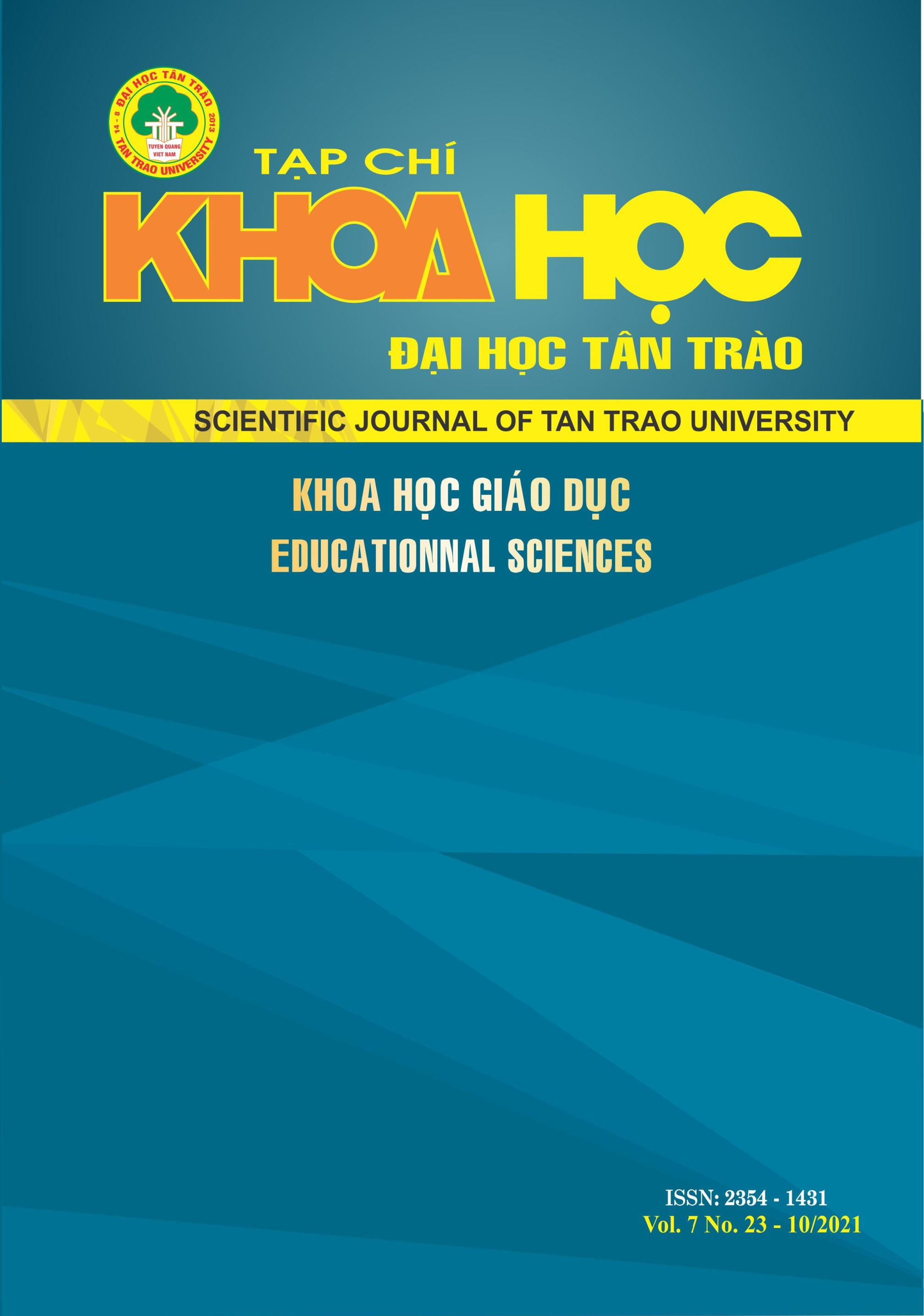EXPERIENCE ACTIVITIES DESIGN IN TEACHING MODULE “ENVIRONMENT AND ENVIRONMENTAL EDUCATION FOR KIDS” FOR EARLY EDUCATION STUDENTS, NAM DINH TEACHER’S TRAINING COLLEGE
DOI:
https://doi.org/10.51453/2354-1431/2021/615Keywords:
EXPERIENCE ACTIVITIESAbstract
The module "Environment and environmental education for preschool children" not only provides knowledge about the environment but also helps students apply that knowledge in environmental education for children in preschool. In order for students' learning to be effective, in addition to the forms of learning organization in the classroom, it is necessary to strengthen the organization of extracurricular activities such as fieldwork, experiments, labor, and field trips. In which, experiential learning is a teaching method to develop learners' capacity. Articles from the construction of the design process of experiential activities, through a specific lesson plan that has been tested and analyzed experimental results, we would like to share with colleagues a way of designing activities. experience in teaching a specific module of the Early Childhood Education training program.
Downloads
References
Đinh Thị Kim Thoa (2015), Xây dựng chương trình hoạt động trải nghiệm sáng tạo trong chương trình giáo dục phổ thông mới, Kỉ yếu hội thảo Quốc tế, Học viện Quản lí giáo dục.
Nguyễn Thị Liên (chủ biên, 2016), Tổ chức hoạt động trải nghiệm sáng tạo trong nhà trường phổ thông, NXB Giáo dục Việt Nam.
Nguyễn Thị Liên (chủ biên, 2016), Tổ chức hoạt động trải nghiệm sáng tạo trong nhà trường phổ thông, NXB Giáo dục.
Trịnh Thu Huyền, Vận dụng mô hình dạy học trải nghiệm của David Kolb trong giảng dạy học phần “Giáo dục môi trường” cho sinh viên ngành giáo dục Tiểu học, trường Đại học Tây Bắc, Tạp chí Giáo dục, số đặc biệt tháng 4/2020, tr 193 – 196.
Downloads
Published
How to Cite
Issue
Section
License

This work is licensed under a Creative Commons Attribution-ShareAlike 4.0 International License.
All articles published in SJTTU are licensed under a Creative Commons Attribution-ShareAlike 4.0 International (CC BY-SA) license. This means anyone is free to copy, transform, or redistribute articles for any lawful purpose in any medium, provided they give appropriate attribution to the original author(s) and SJTTU, link to the license, indicate if changes were made, and redistribute any derivative work under the same license.
Copyright on articles is retained by the respective author(s), without restrictions. A non-exclusive license is granted to SJTTU to publish the article and identify itself as its original publisher, along with the commercial right to include the article in a hardcopy issue for sale to libraries and individuals.
Although the conditions of the CC BY-SA license don't apply to authors (as the copyright holder of your article, you have no restrictions on your rights), by submitting to SJTTU, authors recognize the rights of readers, and must grant any third party the right to use their article to the extent provided by the license.


